In recent years, there has been a marked resurgence of interest in skilled trades among young Americans, particularly in fields like welding, plumbing, and electrical work. This shift is driven by a confluence of economic and cultural factors. Rising college tuition costs and the burden of student loan debt have prompted many young adults to reconsider traditional four-year degrees in favor of faster, more affordable vocational training. Alongside this, a growing awareness of the strong earning potential and job security in skilled trades has enhanced the appeal of construction and related careers. For some, the accelerating rise of artificial intelligence—and its potential to automate a wide range of traditional white-collar jobs—has further underscored the value of hands-on work.
This growing interest in the trades aligns with broader labor market trends. According to projections from the U.S. Bureau of Labor Statistics (BLS), employment in the construction sector is expected to grow by 5.6% between 2023 and 2033—outpacing the 4.0% average growth rate for all occupations during the same period. Demand is being driven by a combination of infrastructure and manufacturing investment, population growth, and a need to replace retiring workers.
Against this backdrop, researchers at Construction Coverage—an independent website that offers tools, guides, and research for construction firms—analyzed the latest BLS data. The analysis uncovers how construction worker wages compare to those of other jobs, which states offer the highest average pay for construction workers, and which specific construction occupations command the highest wages. The analysis also looks at total employment figures and projected growth rates for each occupation, providing a snapshot of where economic opportunities in construction are strongest.
Here are the key findings from the report:
- Strong National Pay: Construction and extraction workers earn a median hourly wage of $28.06, translating to an annual median of $58,360—well above the earnings for many jobs requiring similar or less formal education.
- Solid Job Outlook: The construction sector is projected to grow 5.6% over the next decade, outpacing the average growth rate of 4.0% across all occupations.
- High Rates of Self-Employment: About 13.9% of construction workers are self-employed—more than double the rate for the overall U.S. workforce (5.8%)—highlighting the sector’s strong entrepreneurial opportunities.
- Best-Paying States: States like Hawaii, Illinois, Massachusetts, Washington, Alaska, and New Jersey report the highest median hourly wages for construction workers—ranging from $35 to over $38.
- Top-Earning Roles: The highest-paying construction job is Elevator and Escalator Installer and Repairer, with a median annual wage of $106,580. Other top roles include construction supervisors, boilermakers, and building inspectors.
- Fastest-Growing High-Paying Job: Electricians—one of the most common high-paying roles—earn a national median wage of $62,350, and are projected to see 10.8% job growth over the next decade.
Construction Wages Compared
Construction workers are well paid compared to other workers with similar levels of education
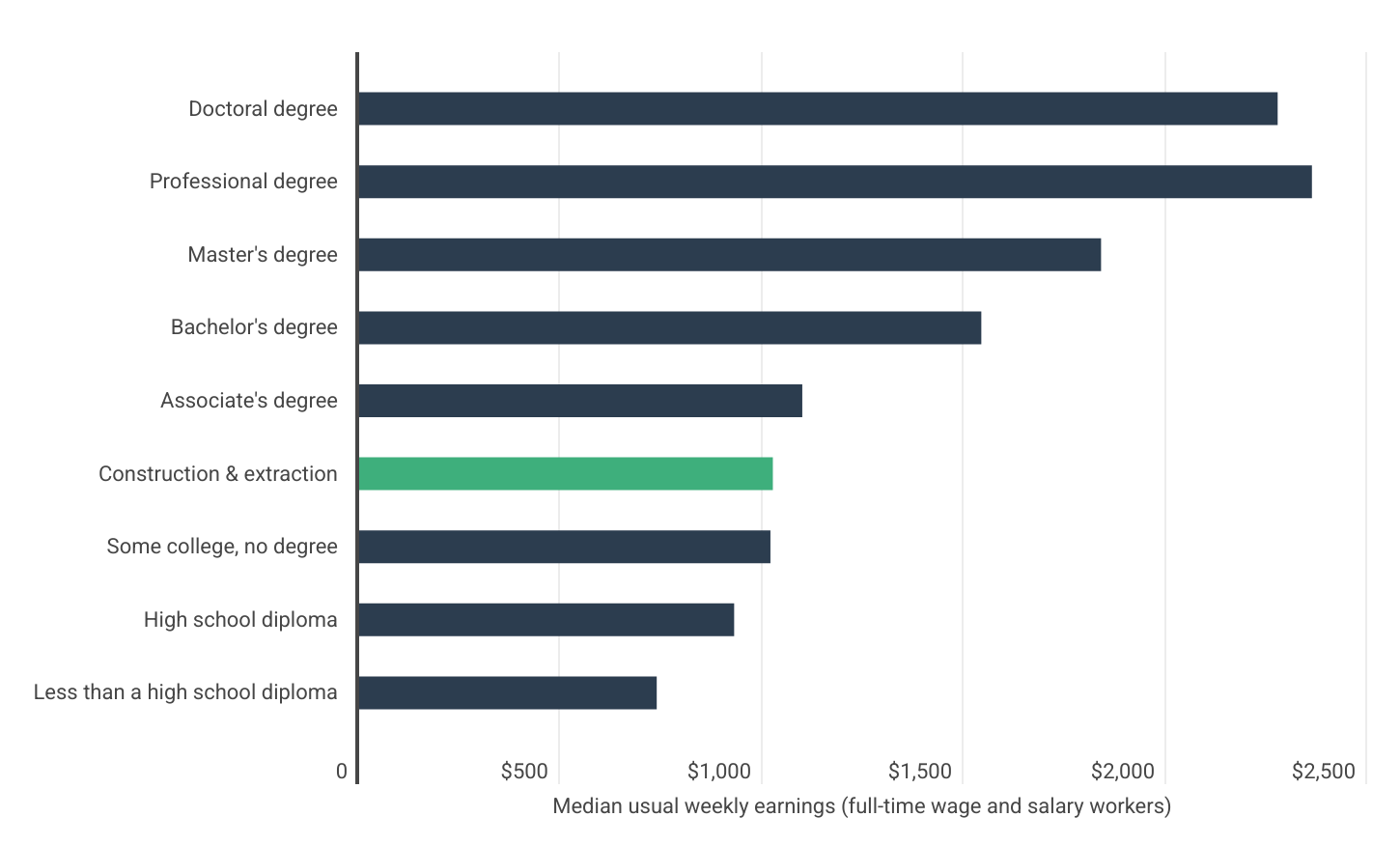
Source: Construction Coverage analysis of U.S. Bureau of Labor Statistics data | Image Credit: Construction Coverage
Construction occupations tend to offer strong wages relative to their educational entry requirements. Most roles in the field do not require a college degree—and in many cases, not even a high school diploma—yet they pay a median weekly income of $1,026 for full-time wage and salary workers. This figure is just below the $1,099 median for those with an associate’s degree and exceeds the typical earnings of individuals with some college but no degree ($1,020).
Median construction wages also significantly outpace the median wages of high school graduates ($930) and those without a high school diploma ($738), highlighting the economic value of skilled labor, even in the absence of formal postsecondary education.
Construction Wages by State
Hawaii, Illinois, and Massachusetts report the highest median hourly wages for construction workers
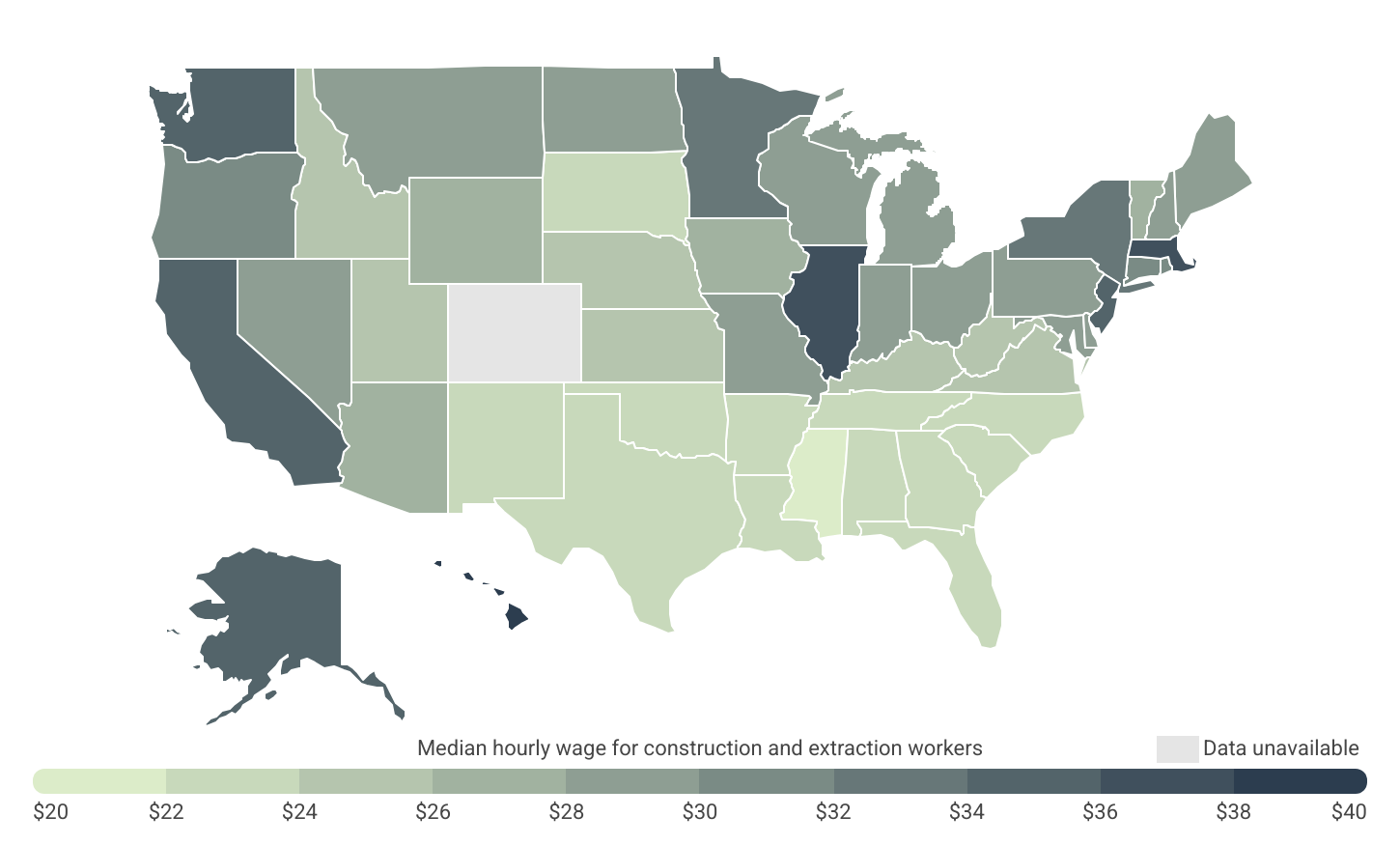
Source: Construction Coverage analysis of U.S. Bureau of Labor Statistics data | Image Credit: Construction Coverage
Construction workers generally receive competitive compensation, though their earnings can significantly vary based on their location. Wages are especially strong on the West Coast, in Alaska and Hawaii, and across parts of the Midwest and Northeast, where hourly wages for construction workers exceed the national average. For instance, Hawaii and Illinois boast median hourly wages exceeding $37, while Massachusetts, Washington, Alaska, and New Jersey all top $35. Conversely, several Southern states pay less than $24 per hour for construction labor.
Moreover, the nature of the role significantly influences the level of compensation. Specialized positions such as elevator installers, boilermakers, and pile driver operators tend to command higher rates. However, even general construction supervisors, building inspectors, and more common tradespeople like electricians also rank among the highest-paying jobs in the construction industry.
Below are the 10 best-paying construction jobs in the U.S. right now. For a complete breakdown of hourly and annual wages, total employment, 10-year employment growth projections, and self-employment figures for common construction occupations across nearly 400 metros and the 49 states with complete data, see Best-Paying Construction Jobs in the U.S. on Construction Coverage.

Photo Credit: Varavin88 / Shutterstock
10. Electricians
- Median hourly wage: $29.98
- Median annual wage: $62,350
- Total employed nationally: 779,800
- Projected 10-year employment growth: +10.8%
- Percentage of workers that are self-employed: 6.9%
Electricians install, maintain, and repair electrical systems that provide power, lighting, communications, and control functions in residential, commercial, agricultural, and industrial settings. Their work ranges from wiring homes and office buildings to servicing complex equipment in factories or power plants. The job pays well in part because of the inherent risks electricians face, and it offers strong growth potential and geographic flexibility.

Photo Credit: Bannafarsai Stock / Shutterstock
9. Structural Iron and Steel Workers
- Median hourly wage: $30.14
- Median annual wage: $62,700
- Total employed nationally: 66,100
- Projected 10-year employment growth: +4.1%
- Percentage of workers that are self-employed: 2.2%
Structural iron and steel workers are skilled professionals who assemble and install the framework for buildings, bridges, and other structures using steel girders, beams, and columns. They interpret blueprints, use heavy machinery to position and secure the materials, and ensure that the structures meet safety and engineering standards.

Photo Credit: Dagmara K / Shutterstock
8. Plumbers, Pipefitters, and Steamfitters
- Median hourly wage: $30.27
- Median annual wage: $62,970
- Total employed nationally: 473,400
- Projected 10-year employment growth: +5.6%
- Percentage of workers that are self-employed: 6.1%
Plumbers, pipefitters, and steamfitters install and repair the structures that carry liquids or gasses from one place to another. There are nearly 500,000 workers nationally, and they can specialize in a range of work, from common household plumbing to more advanced industrial systems.

Photo Credit: Schankz / Shutterstock
7. Tapers
- Median hourly wage: $31.11
- Median annual wage: $64,700
- Total employed nationally: 20,000
- Projected 10-year employment growth: -0.7%
- Percentage of workers that are self-employed: 21.6%
Tapers have a specialized role in the process of finishing interior walls before they’re painted or wallpapered. While full-time tapers are not very common, the job pays well for those who have the skill and available work.
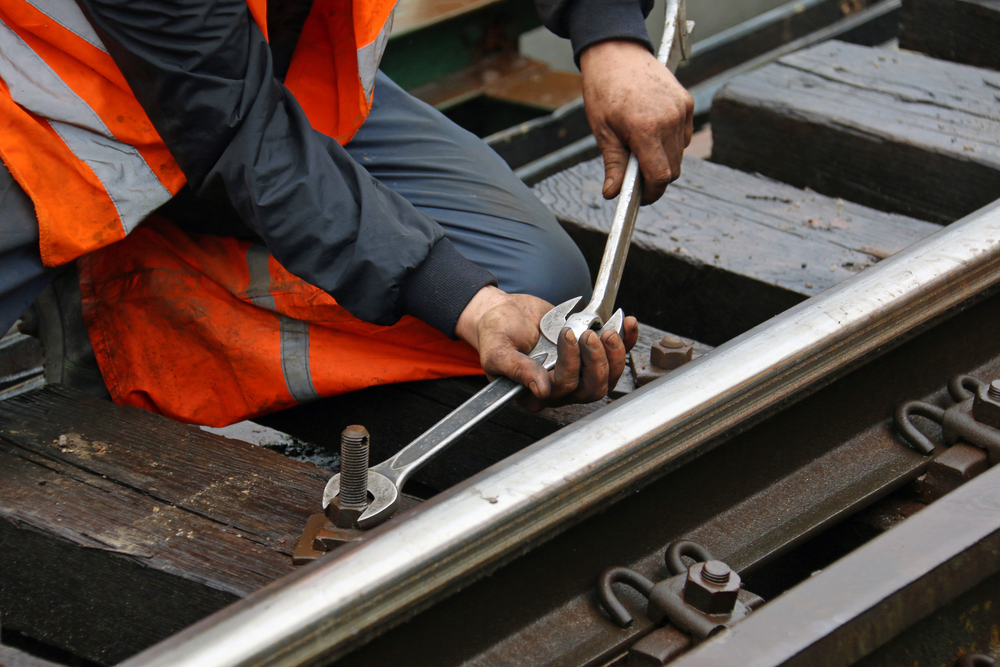
Photo Credit: Mrak.hr / Shutterstock
6. Rail-Track Laying and Maintenance Equipment Operators
- Median hourly wage: $32.39
- Median annual wage: $67,370
- Total employed nationally: 17,700
- Projected 10-year employment growth: +2.5%
- Percentage of workers that are self-employed: N/A
These railroad workers specialize in laying track for trains and related equipment, as well as maintaining and repairing both the track and its underlying ties. While these jobs pay well, the opportunities to find one are limited.
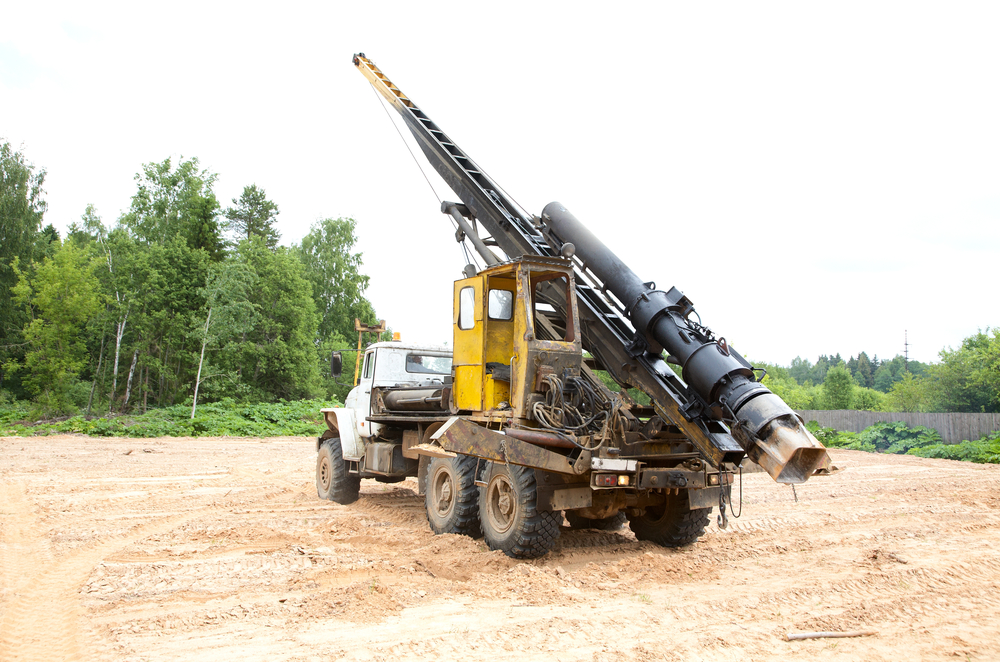
Photo Credit: Alarich / Shutterstock
5. Pile Driver Operators
- Median hourly wage: $33.90
- Median annual wage: $70,510
- Total employed nationally: 3,100
- Projected 10-year employment growth: +4.6%
- Percentage of workers that are self-employed: 2.7%
Pile driver operators drive pilings into the ground for the construction of structures like retaining walls and foundations for buildings and bridges. There are just slightly more than 3,000 employed nationally, but opportunities are projected to grow.

Photo Credit: Sorn340 Studio Images / Shutterstock
4. Construction and Building Inspectors
- Median hourly wage: $34.67
- Median annual wage: $72,120
- Total employed nationally: 142,600
- Projected 10-year employment growth: 0.0%
- Percentage of workers that are self-employed: 4.2%
Construction and building inspectors leverage their comprehensive knowledge of blueprints, building codes, and local regulations to ensure that projects are executed in compliance with safety and legal standards. Typically requiring relevant experience and professional licensure or certification, inspectors are sought-after professionals in regions experiencing construction activity.

Photo Credit: Alexxxey / Shutterstock
3. Boilermakers
- Median hourly wage: $35.26
- Median annual wage: $73,340
- Total employed nationally: 11,300
- Projected 10-year employment growth: -1.2%
- Percentage of workers that are self-employed: N/A
Boilermakers are skilled professionals tasked with assembling and maintaining steam boilers used for heating buildings or generating electricity. Their responsibilities encompass the construction and installation of tanks, fittings, valves, regulators, and other components, along with tasks like testing, cleaning, and performing repairs. Although it ranks among the higher-paying roles in the construction industry, the number of available positions is expected to decrease over the next decade.

Photo Credit: Sirtravelalot / Shutterstock
2. First-Line Supervisors of Construction Trades and Extraction Workers
- Median hourly wage: $37.83
- Median annual wage: $78,690
- Total employed nationally: 853,200
- Projected 10-year employment growth: +5.9%
- Percentage of workers that are self-employed: 7.6%
First-line supervisors are the on-the-ground leaders responsible for coordinating and directing day-to-day operations at construction and extraction sites. Their duties include planning and organizing the day’s work to keep projects running smoothly and safely. As the industry adopts more digital tools, supervisors are increasingly expected to use a range of newer software technologies—both general programs like Microsoft Excel and PowerPoint, and specialized construction management platforms—to manage schedules, track progress, and communicate with teams.
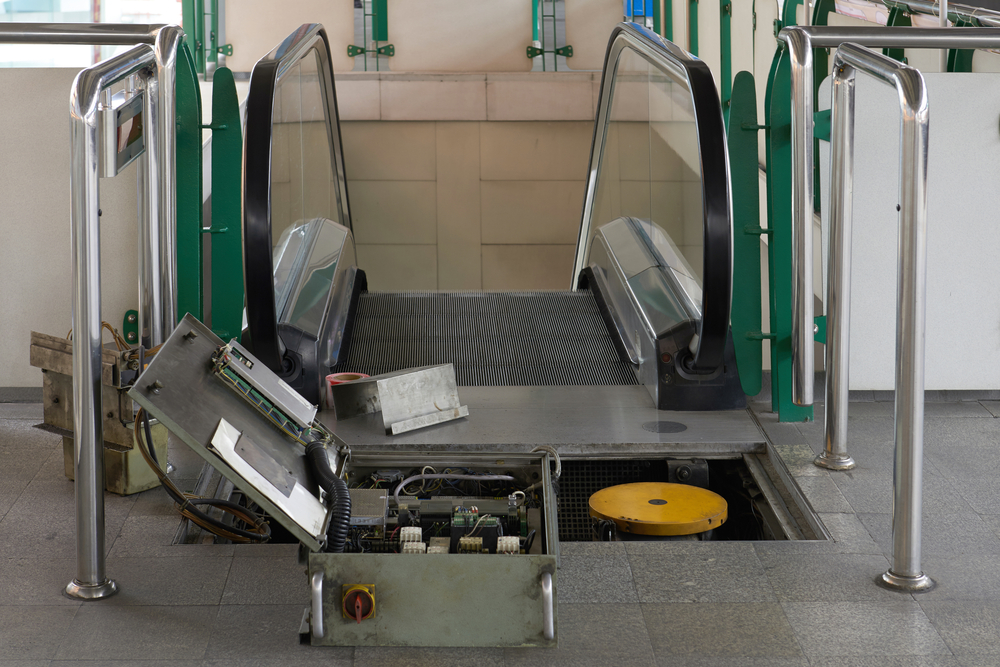
Photo Credit: MiloLabrador / Shutterstock
1. Elevator and Escalator Installers and Repairers
- Median hourly wage: $51.24
- Median annual wage: $106,580
- Total employed nationally: 24,400
- Projected 10-year employment growth: +5.7%
- Percentage of workers that are self-employed: N/A
Elevator and escalator installers specialize in the installation, upkeep, and repair of vertical transportation systems commonly found in hotels, office buildings, malls, and airports. These technicians earn some of the highest wages among skilled trades due to the job’s technical complexity, strict safety requirements, and strong union representation. The role demands expertise in electrical, mechanical, and computerized control systems, along with extensive training and certification. Ongoing maintenance, inspections, and repairs are legally required to keep elevators and escalators operating safely, creating steady, well-compensated work across markets.
Methodology & Detailed Findings

Photo Credit: Sirtravelalot / Shutterstock
To find the best-paying construction jobs, researchers analyzed data from the U.S. Bureau of Labor Statistics 2024 Occupational Employment and Wage Statistics and 2023 Employment Projections surveys. Occupations were ranked according to median hourly wage. Researchers also included median annual wages, total employment, and projected 10-year employment growth (2023–2033). The percentage of workers that are self-employed for each occupation was also included. Compensation data includes both part-time and full-time wage and salary workers, whereas employment data includes all workers (including those who are self-employed).
For complete results, see The Best-Paying Construction Jobs in the U.S. on Construction Coverage.




